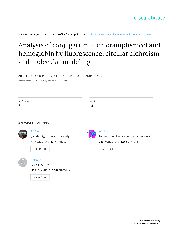摘要
Chloramphenicol is a low cost, broad spectrum, highly active antibiotic, and widely used in the treatment of serious infections, including typhoid fever and other life-threatening infections of the central nervous system and respiratory tract. The purpose of the present study was to examine the conjugation of chloramphenicol with hemoglobin (Hb) and compared with albumin at molecular level, utilizing fluorescence, UV/vis absorption, circular dichroism (CD) as well as molecular modeling. Fluorescence data indicate that drug bind Hb generate quenching via static mechanism, this corroborates UV/vis absorption measurements that the ground state complex formation with an affinity of 10(4) M-1, and the driving forces in the Hb-drug complex are hydrophilic interactions and hydrogen bonds, as derived from computational model. The accurate binding site of drug has been identified from the analysis of fluorescence and molecular modeling, alpha(1)beta(2) interface of Hb was assigned to possess high-affinity for drug, which located at the beta-37 Trp nearby. The structural investigation of the complexed Hb by synchronous fluorescence, UV/vis absorption, and CD observations revealed some degree of Hb structure unfolding upon complexation. Based on molecular modeling, we can draw the conclusion that the binding affinity of drug with albumin is superior, compared with Hb. These phenomena can provide salient information on the absorption, distribution, pharmacology, and toxicity of chloramphenicol and other drugs which have analogous configuration with chloramphenicol.
- 出版日期2012-1-11
- 单位中国农业大学
